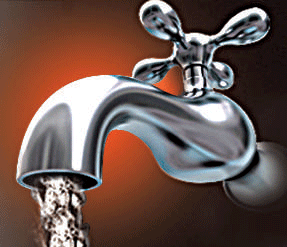
Given the pace at which Bangalore is growing, the gap between demand and supply of water may almost double by 2026, leaving a large section of the population waterless, a study by the Confederation of Indian Industries (CII) has warned.
Despite several initiatives taken by the government, the City’s water demand and supply gap may jump to 1,300 million litres a day by 2026, almost double than the present 750 million litres a day, according to the study, ‘An integrated water management strategy for Bangalore’, released by Kapil Mohan, Principal Secretary, Water Resources Department, during the Annual Water Conference, 2014, here on Wednesday.
To overcome the shortage, the City’s ground water is being extracted aggressively, because of which ground water tables have sunk to record lows. The situation is so grave that there are areas in Bangalore where water is not available even 300 metres below the ground while 70 per cent of the available ground water is either non-potable or unfit for use.
Six initiatives
The conference has suggested six initiatives that could yield up to 750 million litres of water a day to bridge the demand and supply gap and address the issue of vanishing lakes and the degeneration in quality of ground water.
These are: encouraging recycling and reuse, increasing rain water harvesting, restoring and rejuvenating lakes, designing a complete solution to use tertiary treatment of water, stemming leakages and formulating a comprehensive strategy for sustainable use of ground water.
In great demand
Most natural resources are in great demand and the stress associated with water is increasing day by day, Mohan said after releasing the report. “In Karnataka, 3,500 TMC of water is available, out of which 2,000 TMC is around the Western Ghats where there are environmental issues. Thus, just 1,500 TMC of water is available for use.
The bulk of the State’s water comes from the Krishna basin, followed by Cauvery basin which is already stressed and then there is the Western Ghats which is largely untapped because of environmental concerns,” he said, adding that the government has a concrete plan to ensure water security in the State.
Onus on all stakeholders
Sandeep Maini, Chairman, CII Karnataka, said the onus of protecting the City’s water resources did not lie with government alone but on all stakeholders, including builders, communities, NGOs and industries.
Hariprasad Hegde, Convener, CII Karnataka Water Task Force, and Global Head-Operations, Wipro Ltd, and M Maheshwar Rao, Commissioner for Industrial Development and Director of Industries and Commerce, also expressed their views on the occasion.